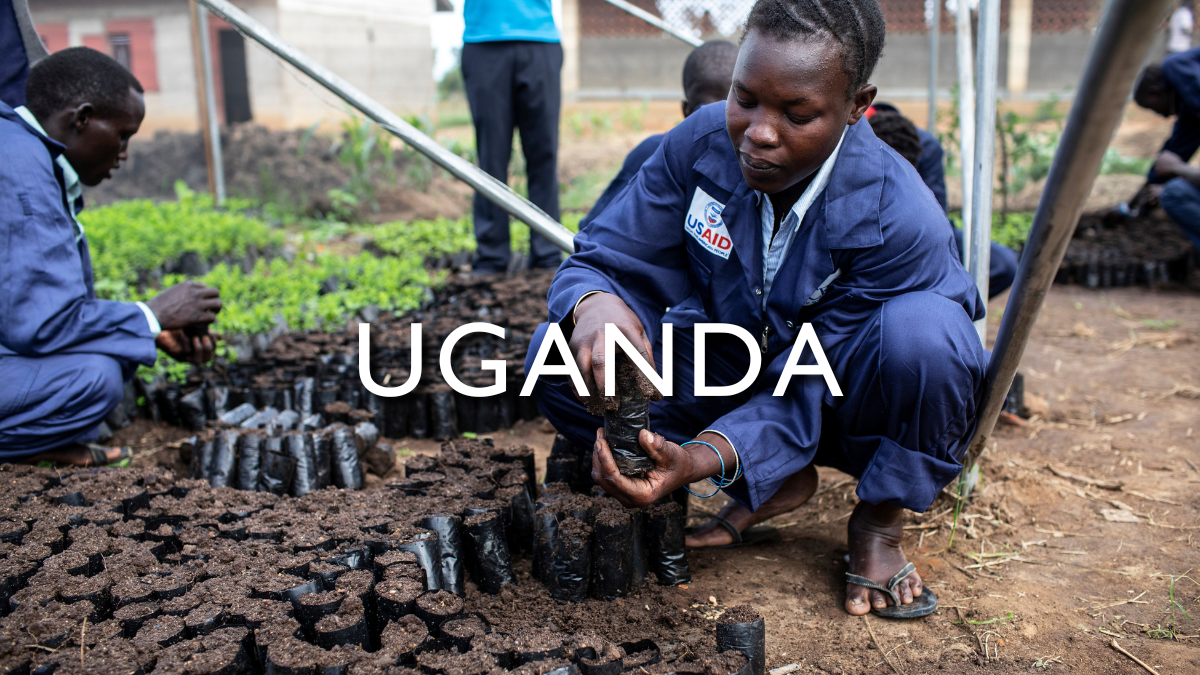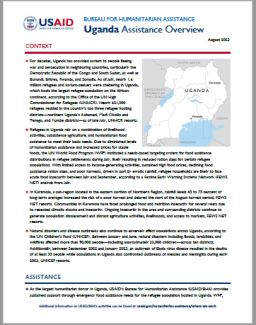
For decades, Uganda has provided asylum to people fleeing war and persecution in neighboring countries, particularly the Democratic Republic of the Congo and South Sudan, as well as Burundi, Eritrea, Rwanda, and Somalia. As of July, nearly 1.6 million refugees and asylum-seekers were sheltering in Uganda, which hosts the largest refugee population on the African continent, according to the Office of the UN High Commissioner for Refugees (UNHCR). Nearly 621,000 refugees resided in the country’s top three refugee hosting districts—northern Uganda’s Adjumani, Madi Okollo and Terego, and Yumbe districts—as of late July, UNHCR reports. Refugees in Uganda rely on a combination of livelihood activities, subsistence agriculture, and humanitarian food assistance to meet their basic needs. Natural disasters and disease outbreaks also continue to adversely affect populations across Uganda, with floods, landslides, and wildfires affecting more than 90,000 people—including approximately 33,000 children—across ten districts from January through July in 2023.
As the largest humanitarian donor in Uganda, USAID provides sustained support through emergency food assistance needs for the refugee population hosted in Uganda. The UN World Food Program (WFP), USAID’s primary partner in Uganda, distributes locally and internationally procured emergency food assistance—such as beans, maize, vegetable oil, and High Energy Biscuits—to refugees and asylum-seekers. Purchasing food locally whenever possible enables WFP to rapidly deliver food assistance to populations in need while simultaneously benefiting Ugandan farmers. USAID also supports WFP to provide cash transfers for food to many refugees, depending on local market conditions, empowering vulnerable individuals to purchase the food most appropriate for their households from local vendors.

